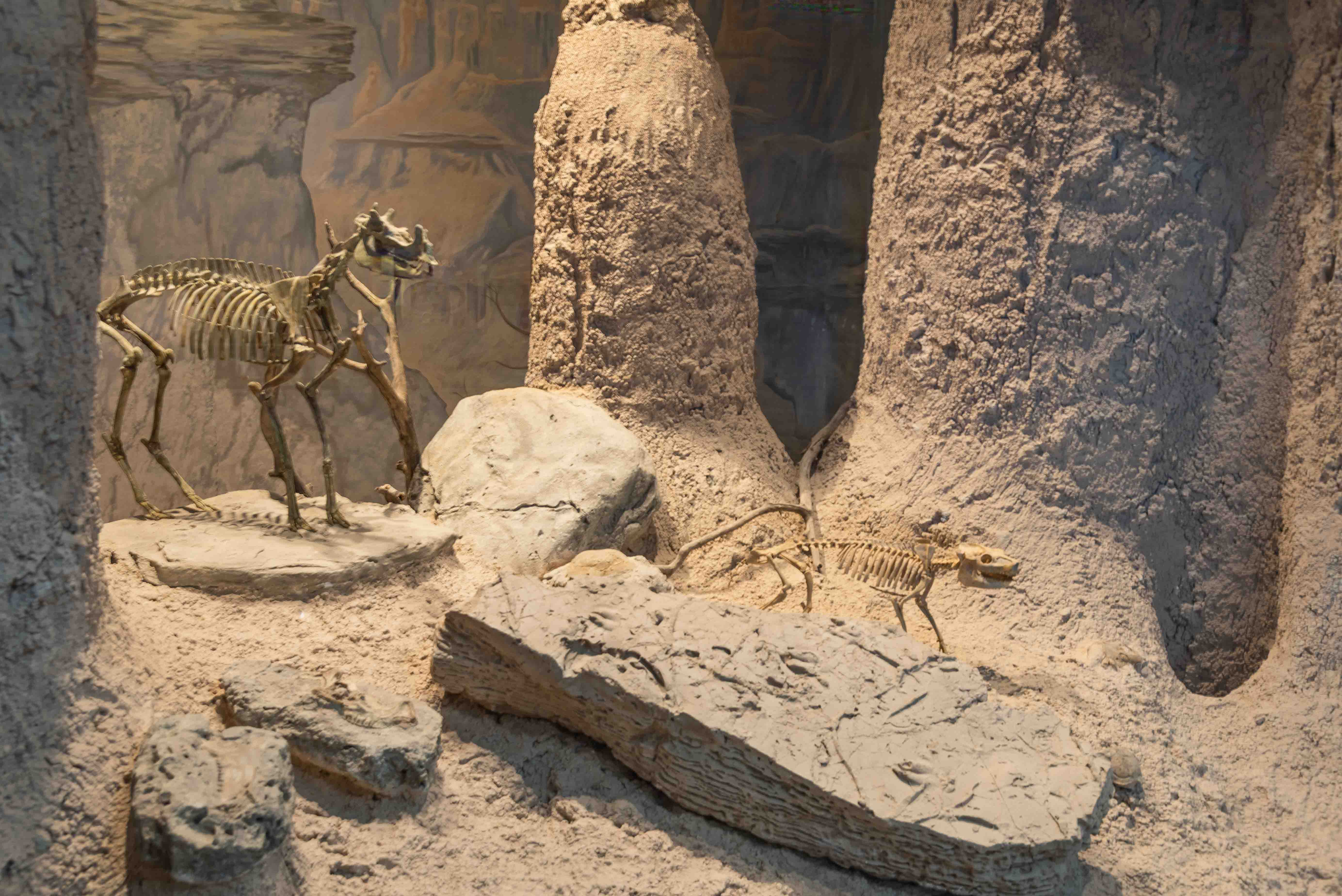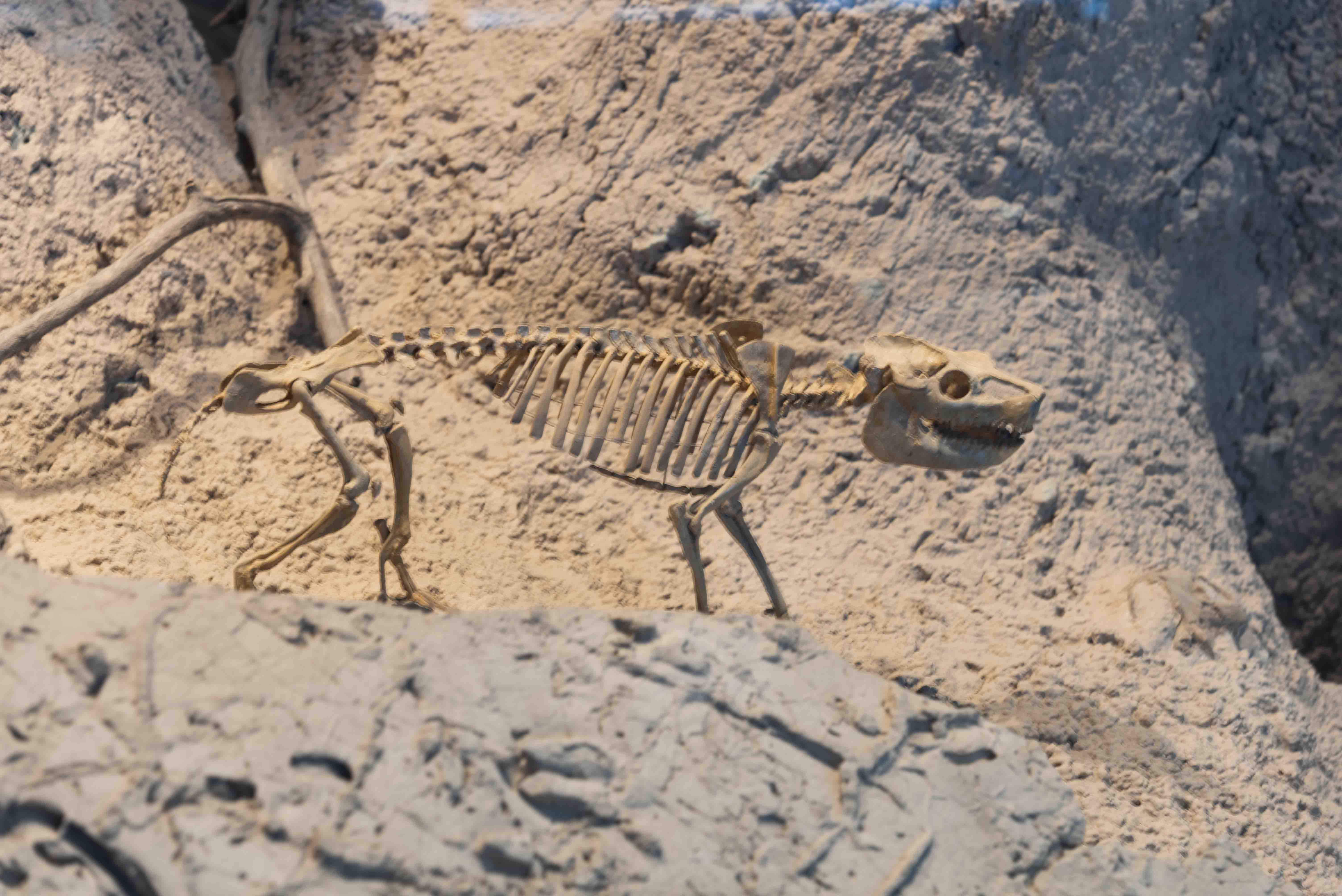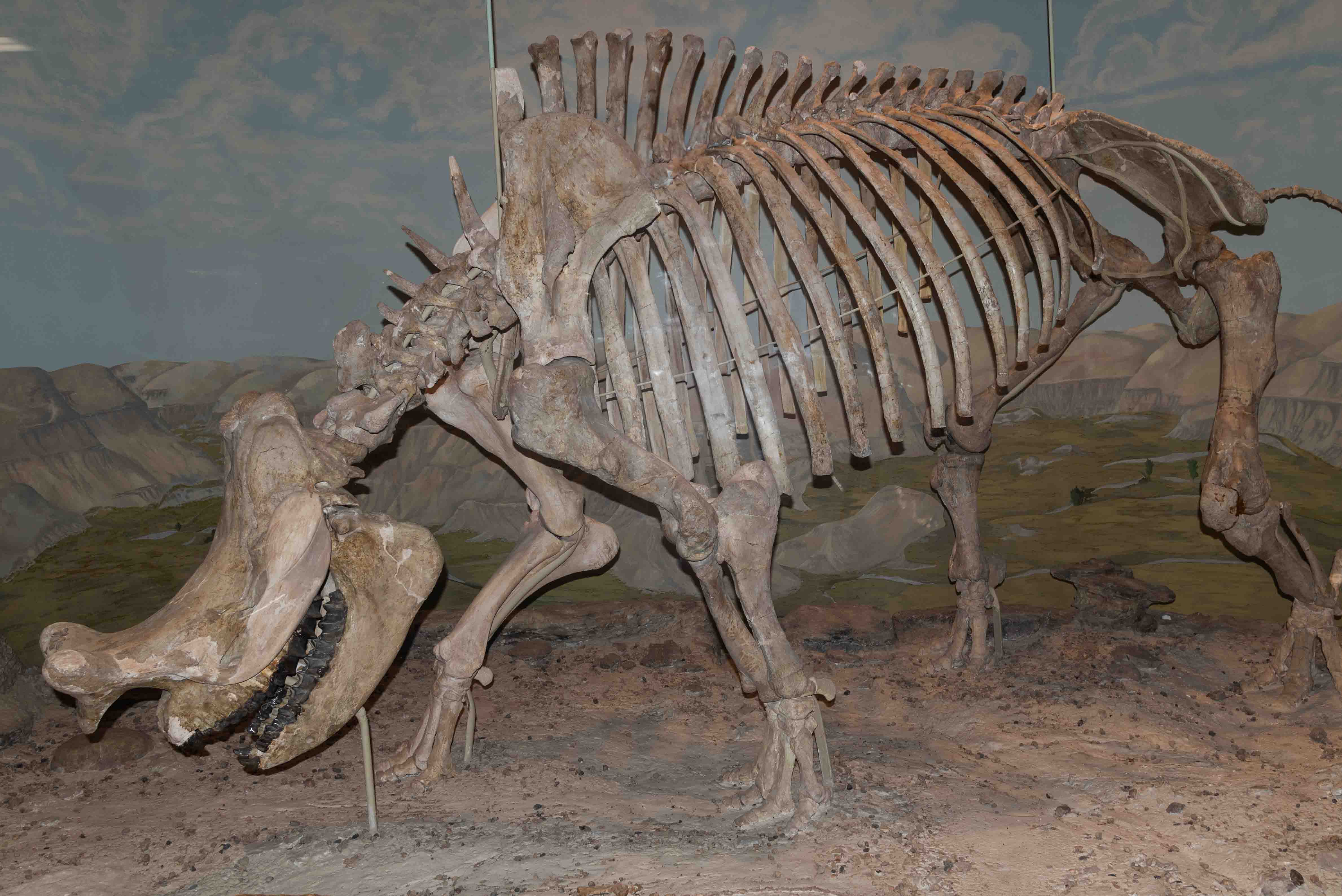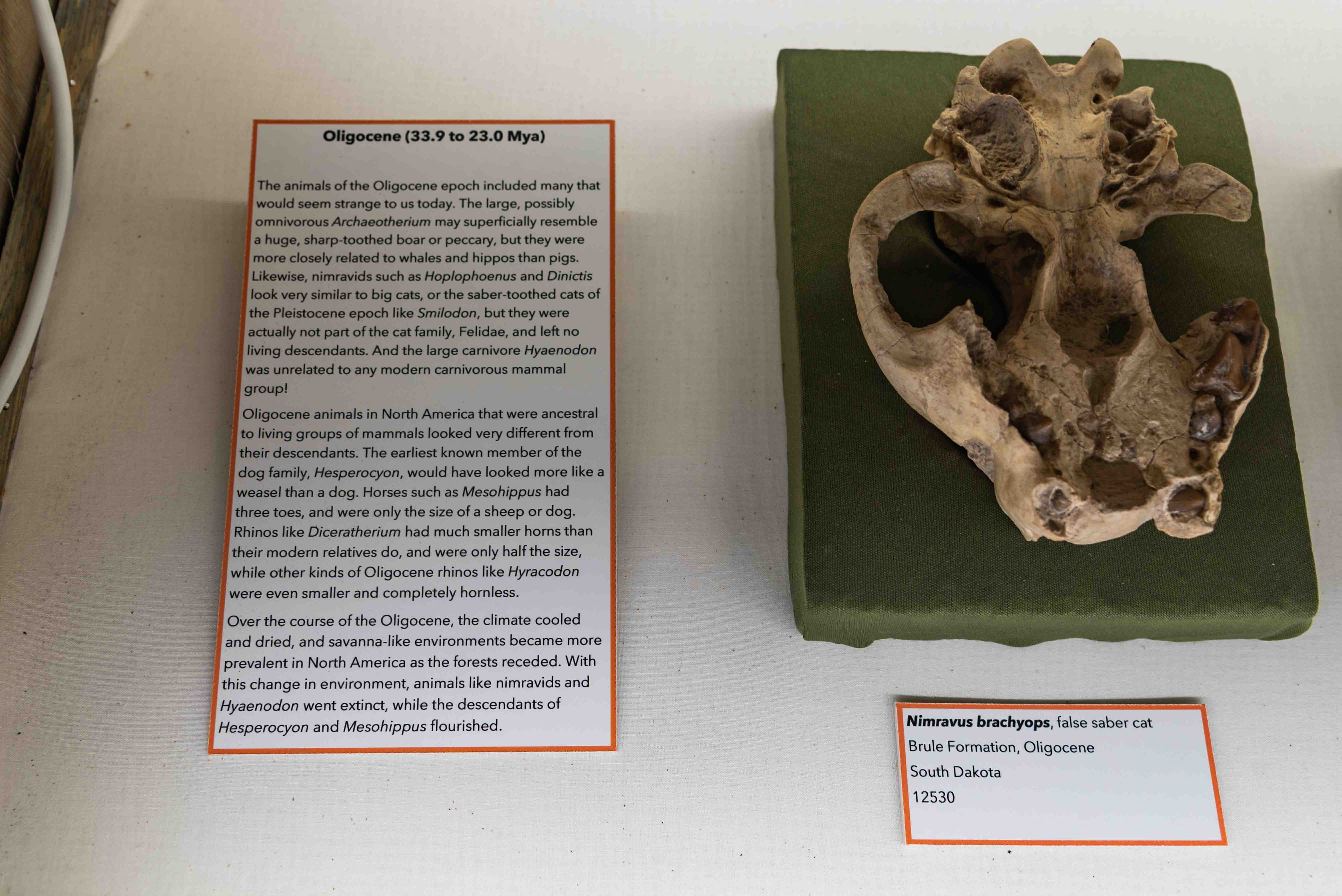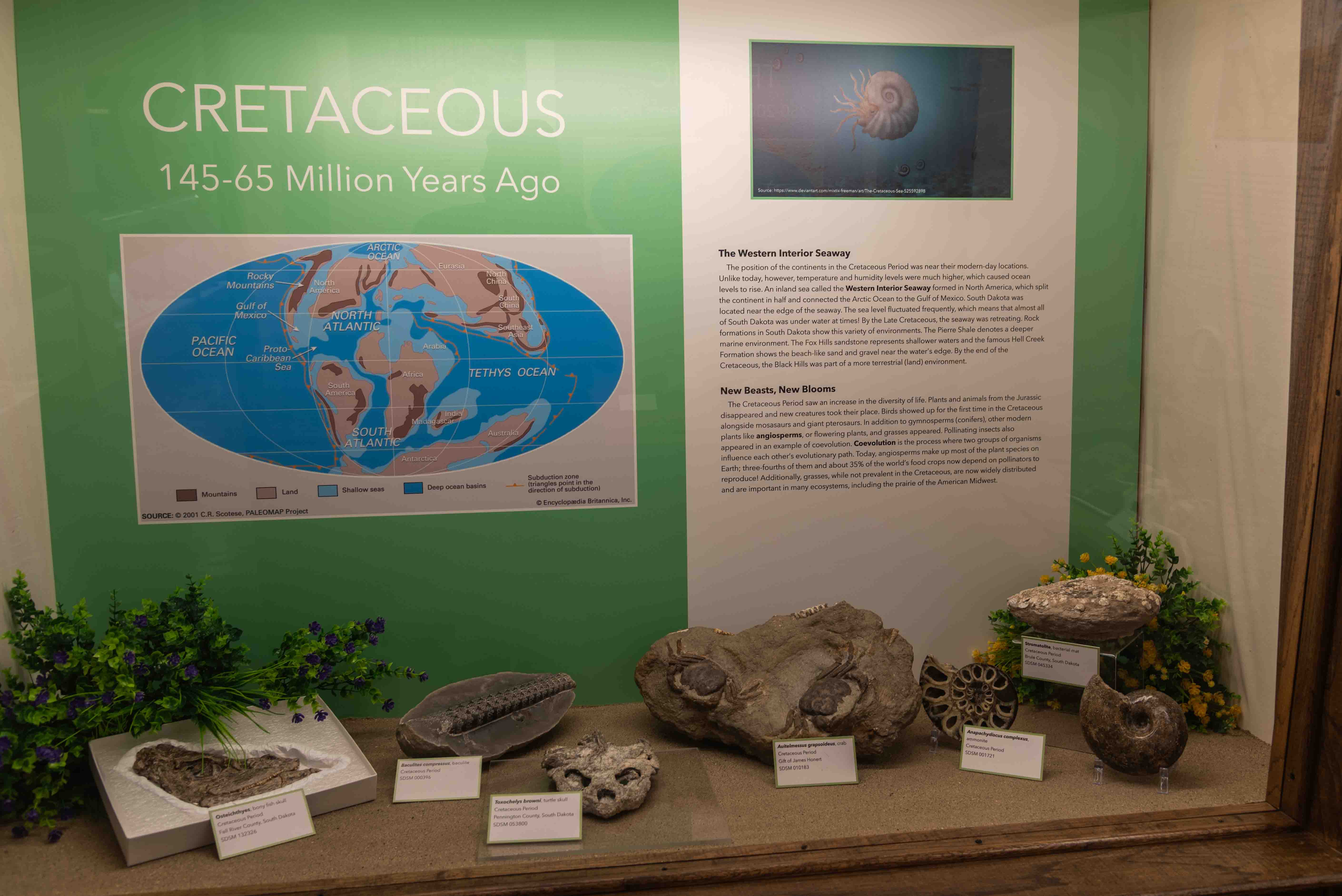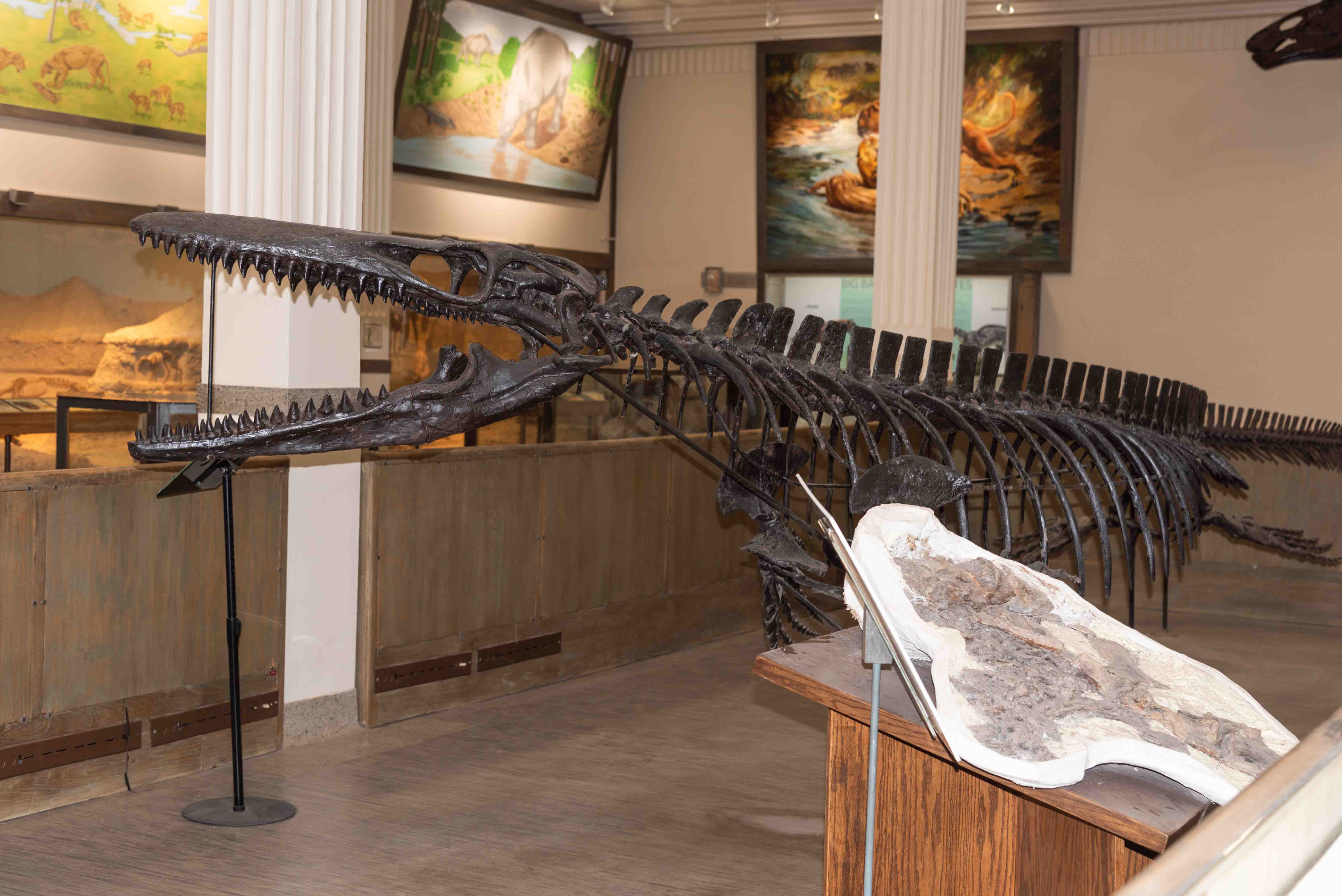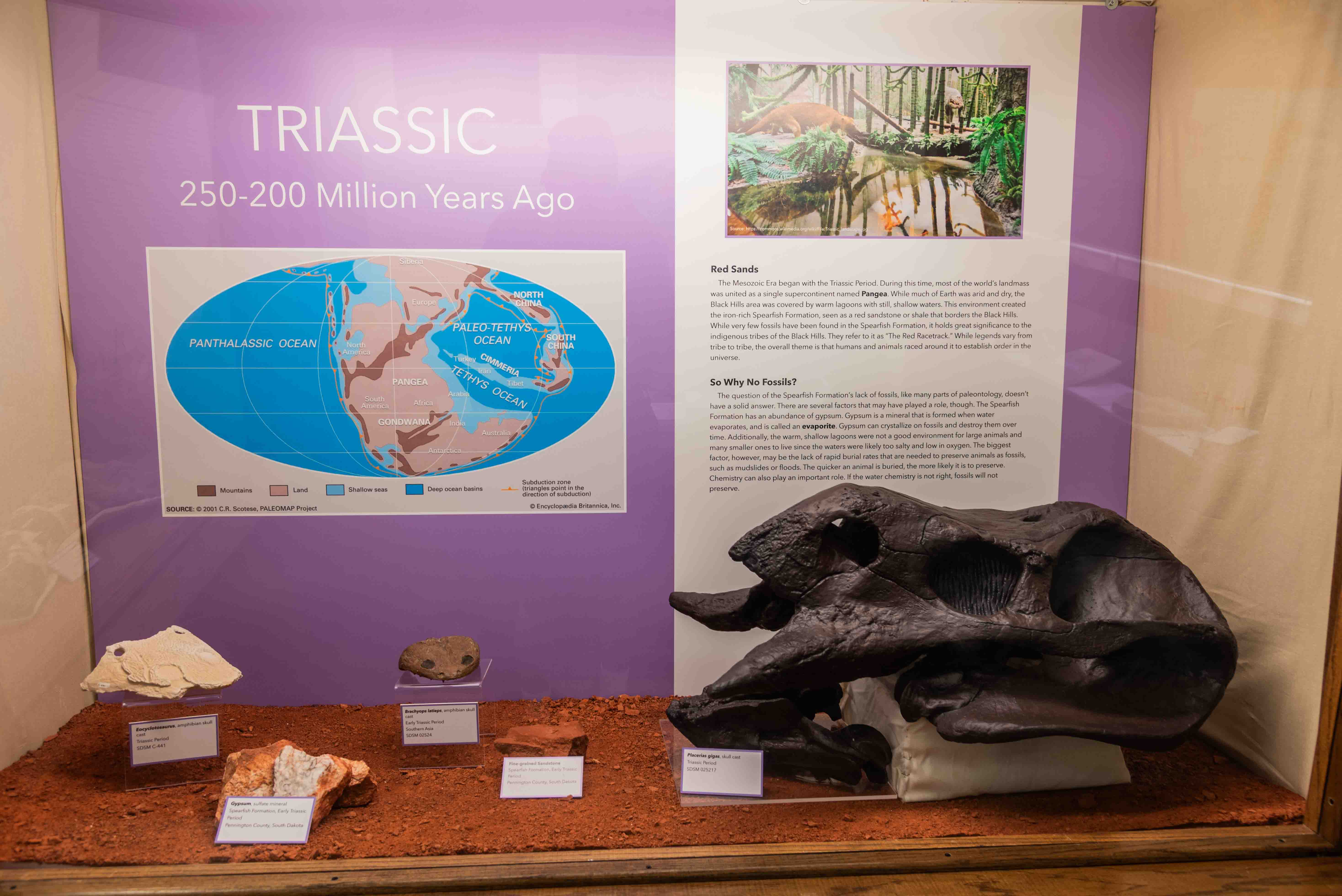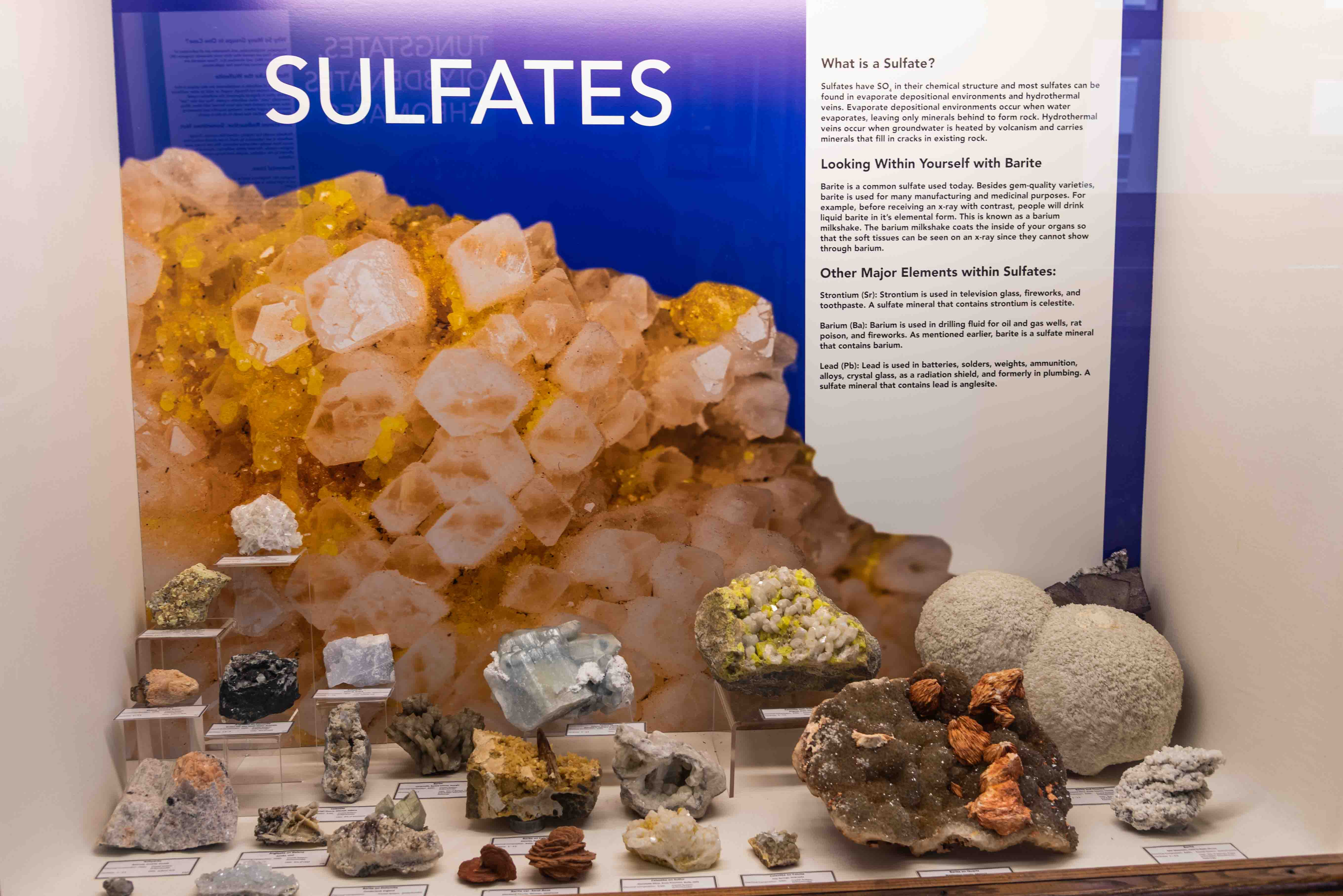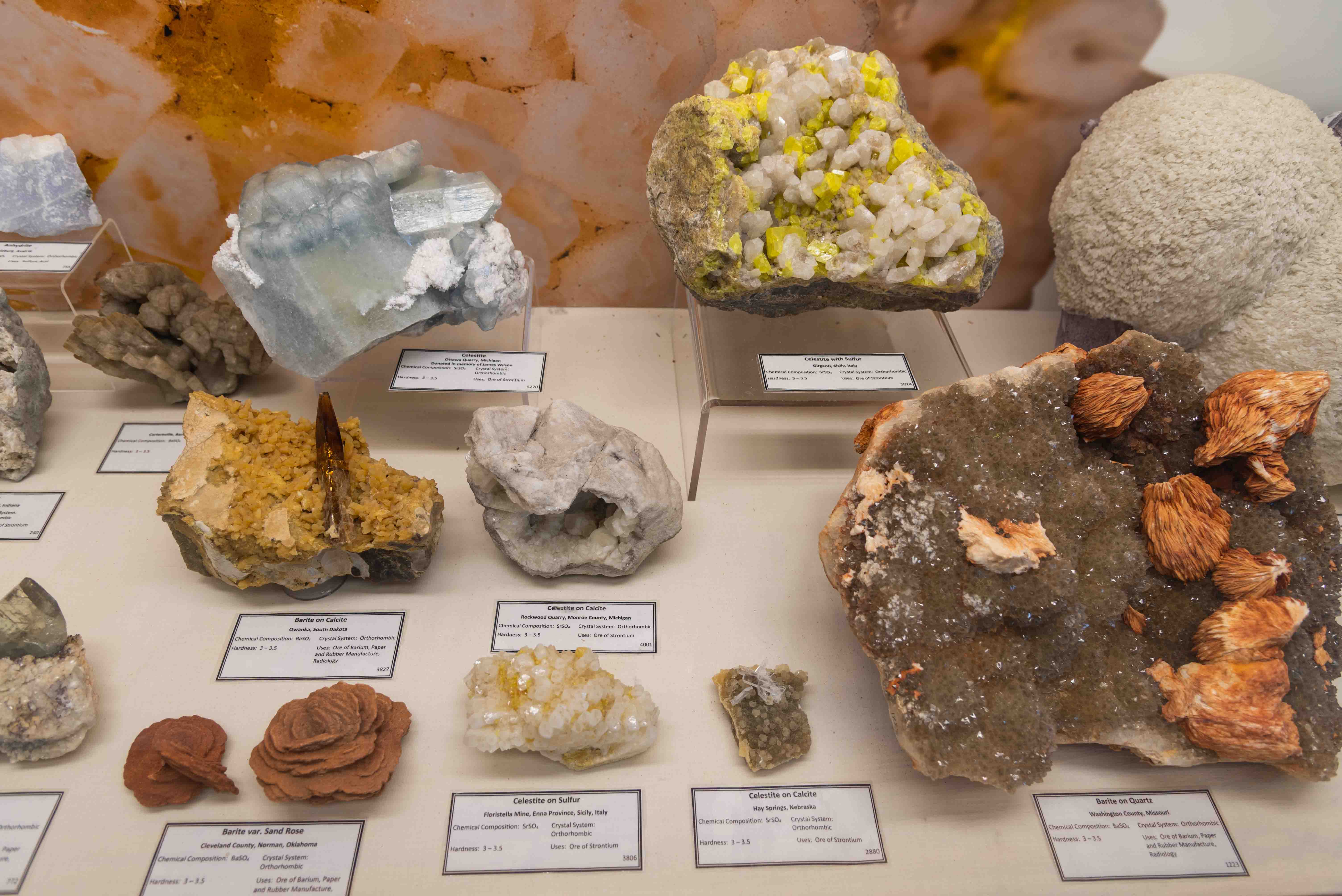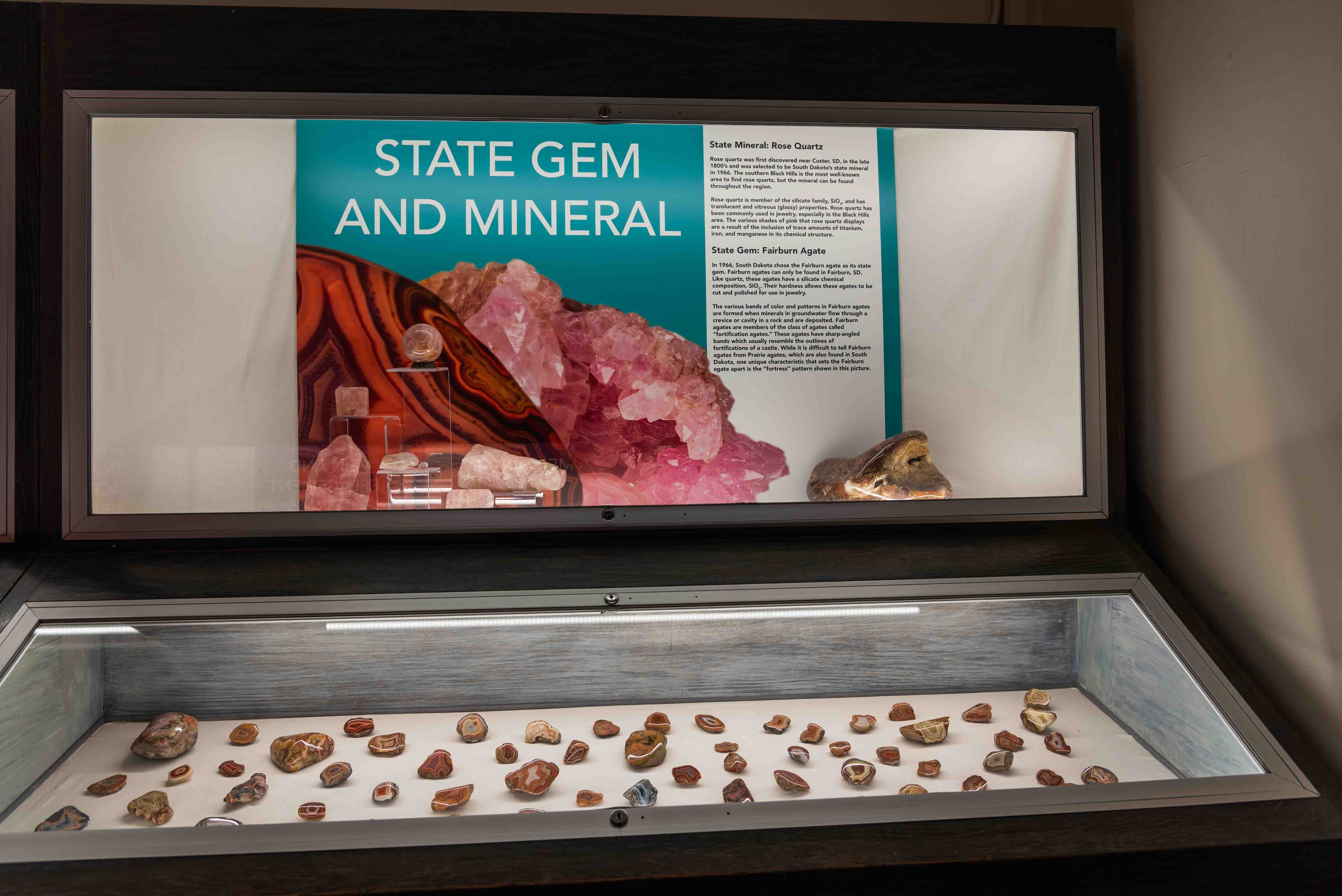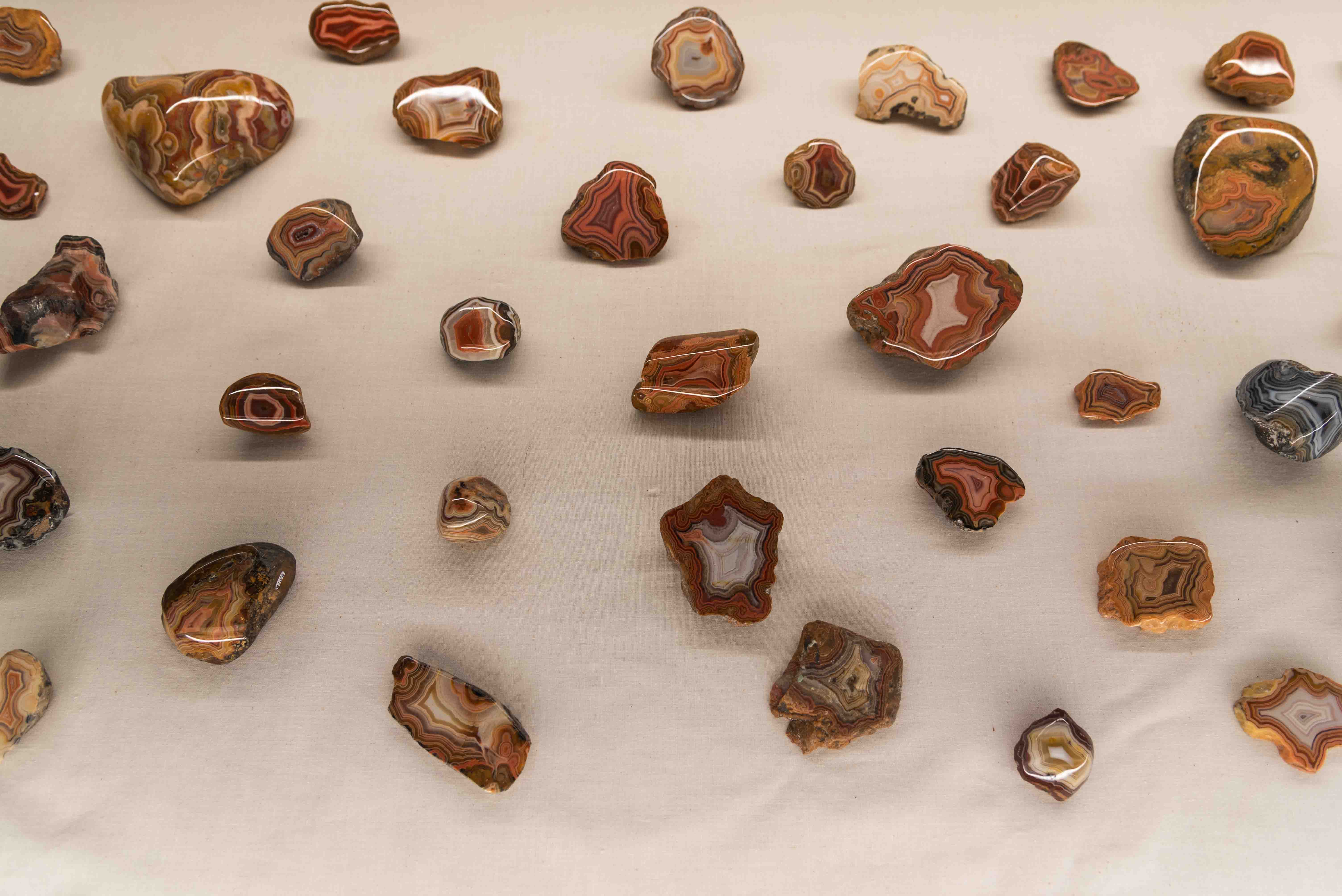South Dakota Mines Museum of Geology
The Museum of Geology is located on the second floor of the O'Harra Building on the campus of the South Dakota School of Mines and Technology (aka South Dakota Mines, aka SD Mines, aka SDSM&T) in Rapid City. The South Dakota Mines Museum of Geology opened in 1885, the same year the school was founded. To my way of thinking, the museum should really be called the Museum of Geology and Paleontology, because over half of its exhibits are fossils from South Dakota, the Northern Great Plains, and Wyoming. I visited the museum in July 2025.
Paleontology
SDM Museum of Geology is located in prime fossil territory. Shale deposits surrounding Rapid City
are rich in fossils of Cretaceous marine reptiles, fish, and invertebrates. The White River
formation to the east and south yields Eocene and Oligocene mammals. Jurassic dinosaurs
come from Wyoming and Utah to the west. And last, but not least, the Hell Creek formation spanning
Montana, Wyoming, North and South Dakota to the north is abundant in plant and dinosaur fossils
from the late Cretaceous to early Paleogene Periods. This is reflected in the museum's exhibits. It
has an extensive collection of Paleogene and Cretaceous fossils, especially mammals from the Eocene and Oligocene Epochs.
I picked three exhibits as the focus of this presentation to keep it relatively short: the Badlands Diorama, Brontotherium
exhibits, and prehistoric felines.
Okay, so I also threw in a little from the Cretaceous Period.
The Museum obviously has many, many more fossil exhibits. Some of these can be viewed as a slideshow by clicking the following link.
Fossil Exhibits
(may take a few seconds to run) Hover cursor over a picture to pause slideshow. Use arrows on a
picture to move to next or previous slide.
Paleogene Period 65 to 23 Mya - (million years ago) - "Age of Mammals" - First Period of the Cenozoic Era. The Paleogene Period is subdivided into three Epochs, Paleocene (65-56 Mya), Eocene (56-34 Mya), and Oligocene (34-23 Mya).
Badlands Diorama
The Badlands Diorama displays complete fossil skeletons of fauna from the White River
Formation, I'm guessing from the area in and around Badlands National Park. The animals
on display are mammals from the Eocene and Oligocene Epochs.
Brontotheriidae ("Titanotheres")
The museum has a fine collection of Brontotherium (aka Megacerops) fossils.
These mammals were rhinocerus-like herbivores distantly related to horses and tapirs.
There are also paintings and sculptures of Brontotherium by artist Charles
R. Knight. Knight is famous for his detailed paintings and sculptures of
prehistoric animals. I've seen his work in other museums.
Prehistoric Felines - Not Your Avereage House Cat
The museum has a fine collection of Felidae fossils (cat family). These belong to the subfamily
Machairodontinae which diverged from the ancestors of living cats about 20 million year ago.
The fossils displayed in the museum belong primarily to the genus Nimravidae ("false saber cat").
These carnivorous mammals roamed much of North America from middle Eocene to late Miocene. Many of the specimens
come from the White River Formation. I might mention a member of another genus called Smilodon, commonly called
"saber-toothed tiger".
Cretaceous Period 145 to 65 million years ago - The third and final period of the Mesozoic Era.
Jurassic Period 200 to 145 million years ago - The middle period of he Mesozoic Era - "Age of Dinosaurs"
Triassic Period 250 to 200 million years ago - The first period of the Mesozoic Era - "Age of Reptiles"
I really didn't find a lot from these periods. Maybe I didn't look hard enough.
Geology and Minerals
The SDM Musuem of Geology has a very extensive mineral collection (thousands
of specimens) that have been gathered over the last 100 years. Many of the
minerals come from mines that are now defunct and countries that now limit
mineral exports. I like the way that the mineral displays are grouped by
chemical compound class, ie., sulfates, iodates, etc. As with the Paleontolgy section,
I have included just a few photos for the sake of brevity. Click the following link
to view lots more (like 100 photos).
Mineral Exhibits
(may take a few seconds to run) Hover cursor over a picture to pause slideshow. Use arrows on a
picture to move to next or previous slide.
Use the form on the Home Page to submit comments, questions, or suggestions. TD Productions Copyright © 2025



